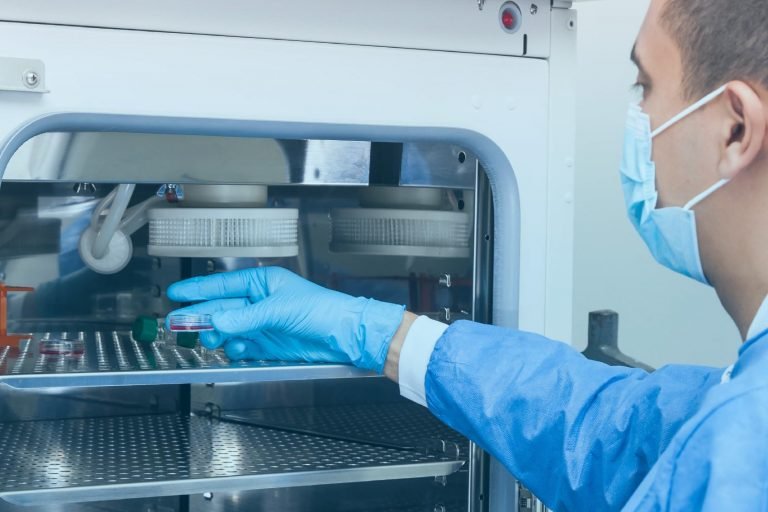Critical Parameters for Safe & Successful Fertility Clinics
Fertility clinics: in many ways, their work is life itself. This makes it essential for every IVF lab to take every possible step to improve the chances of success for its clients.
Embryos and oocytes can be easily susceptible to environmental factors such as temperature, pH, and CO2/O2 levels, making it absolutely critical that these resources are kept in protected and stable environments.
But how does a lab manager ensure that ambient conditions are controlled and stable throughout the entire IVF process? What parameters should be taken into consideration and monitored? How does a fertility clinic free itself from worrying about the stability of its equipment, facility, and overall environment and instead focus on the needs of its clients?
Let’s explore some of the equipment, facility features, and workflows a fertility clinic should monitor in its lab: how to monitor, what to look for, and where, when, and how to respond to events and changes.
Monitoring Incubators
Incubators are the bedrock of every fertility lab’s installed equipment. Incubators culture cells, and conditions therein must be precise and continually optimized to create a successful environment for nurturing embryos.
Monitoring conditions and variables within each incubator and — crucially — reporting on any changes therein can save thousands of dollars in damages to samples and equipment, and an untold amount of damage to a lab’s reputation.
For example, incubators have a tendency to evaporate some of a sample’s oils due to cold spots, which, if not discovered in time, can lead to the growth of mold and destroyed samples, making it crucial to have an incubator monitoring system with humidity measurement capabilities.
Additionally, monitoring CO2/O2 levels (the basis of all living things) is a key metric as CO2 levels can help determine pH (spikes in pH can, of course, have an immediate, adverse impact). Even something as basic as the door to every incubator should be monitored, as a door accidentally left open for even a matter of seconds can lead to temperature and CO2/O2 level changes (see Figure 1).
Figure 1: Relationship between O2 (yellow line) & CO2 (green line) in an incubator. Shows inverse relationship between the two - CO2 dips and O2 spikes. These are often related to door openings.
Monitoring Cryotanks
Cryotanks use liquified gas as a long-term means of perfectly preserving biological samples.
As great as they are at what they were built to do, cryotanks are often a “double-edged sword,” as they can be hazardous to both property and the health of staff.
For instance, gas leaking from cryotanks can quickly lead to asphyxiation in poorly ventilated areas. On the flip side, too much pressure in a cryotank can cause it to explode. Precautions must be taken on both sides of the equation to prevent leaks and/or explosions.
In many cases, it’s as simple as having sensors in the surrounding area of any cryotanks that measure CO2/O2 levels in the air (Figure 2), and sensors inside each cryotank to measure temperature and pressure levels.
Figure 2: This graph shows 6 cryotanks and the O2 sensor (yellow line) in the room. During filling times, you can see the O2 levels drop and then return to acceptable levels. At times when more cryos are filled at once, you can see larger dips in ambient O2 levels.
Simple precautions like this protect your business interests, your equipment and facility, your samples and raw materials, and — most importantly — your people.
Maintenance: a Cornerstone of Successful Lab Monitoring
It’s clear to most clinical lab managers that having robust and industrial grade sensors is vital to ensuring samples, equipment, facilities, and personnel are protected at all times, but “having” them is not the be-all/end-all.
In a work area as sensitive as a clinical lab — and an outside world as unpredictable as our current one often seems to be — it’s of utmost importance to ensure sensors are recalibrated regularly.
Calibration & Recalibration
Depending on sensor and sensitivity of samples, most labs usually recalibrate every one to six months. But a set schedule is not necessarily the best approach, here. Unless you’re using a proper lab monitoring system with insightful data that can help discover early signs of equipment failure, there’s no way of knowing when a recalibration is needed.
This is sadly what happened in a well-known US fertility clinic. Due to a default in the tank, a temperature change took place and thousands of eggs were thawed and destroyed. A lawsuit was brought, and $15m in damages was awarded to impacted families. Had this temperature change been captured and reported by monitoring systems, the outcome could have been very, very different.
Continuous real-time monitoring of lab equipment such as incubators and cryotanks can find patterns and trends in the data to help predict future failures, assure quality control, and prevent tragic and costly sample losses.
Most companies don’t know where to begin, which is where XiltriX can help, offering “lab monitoring-as-a-service.” From hardware to reporting, XiltriX leverages 30+ years of experience to monitor lab facilities, equipment, and environments in real-time with 24/7 live person support.
To learn more about how XiltriX can help protect your lab’s critical assets and equipment 24/7/365, schedule a free lab consultation with one of our experts.






